By Anna Denman, History ’23, Fall 2022 Archives Intern
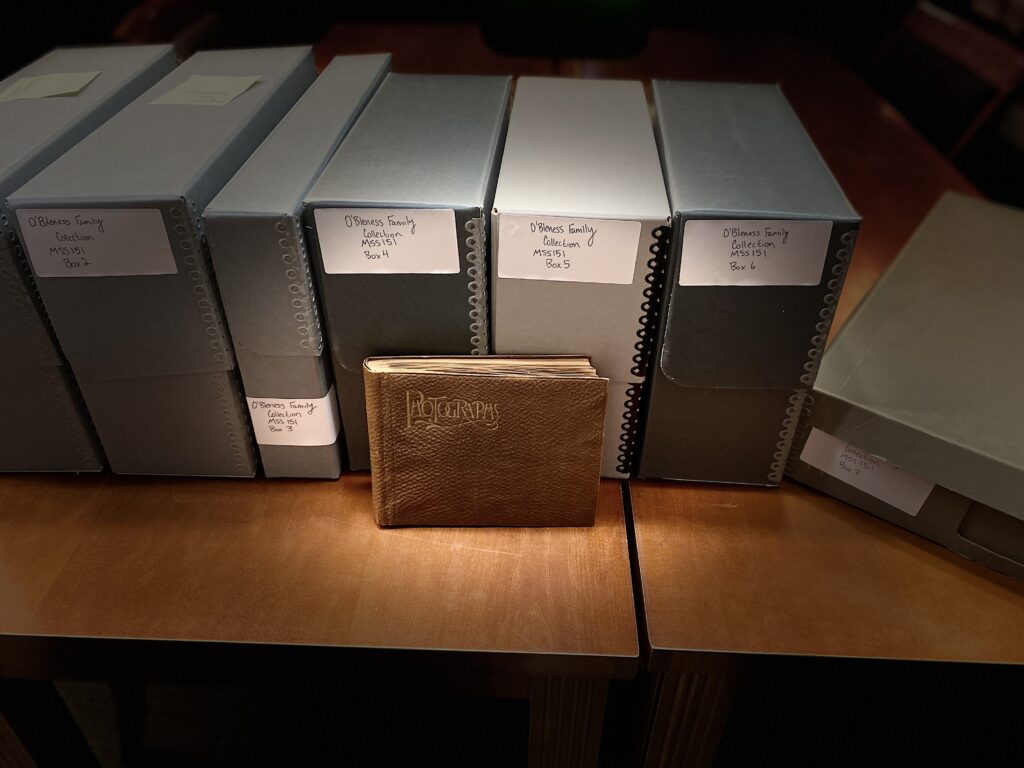
In my first post about the Mystery Photo Album, I wrote that I hoped to continue identifying photographs from the album and piecing together the O’Bleness family’s story. In the five weeks that followed my last post, I spent hours familiarizing myself with the O’Bleness family, the stories of their lives, and their accomplishments as I processed their collection. The photographs, newspaper articles, letters, journals, invitations, and other materials that I examined as I explored the collection paint the picture of a close-knit family who loved both Athens and Ohio University. They used their wealth and success to support this town and institution. Although some of the photographs in the album and in the overall collection remain unidentified, I feel as through I have a much clearer picture of the O’Bleness family and their influence on Athens than I did five weeks ago.
I spent a few weeks completely reorganizing and re-boxing the entire collection, investigating each new box as I determined how the materials should be organized. As the collection has been sitting on a shelf and has not been reorganized since the seventies, everything needed to be placed in new acid-free boxes and archival preservers. I hope that the effort put into this reorganization will make it easy for O’Bleness family members curious about their ancestor’s history or any other researchers who may be interested in the family to view the full scope of the collection.
The collection contained envelopes and folders full of both identified and unidentified photographs, so the process of separating these photographs and labeling the folders took some time. Each of these photographs contributed to my investigation into the O’Bleness family. Photographs of the family’s friends revealed who ran in the family’s circle. As multiple of the family members held influential roles in Athens and Ohio University, it is unsurprising that the names of some of their friends might ring a bell to anyone familiar with OHIO and its history.
For example, I ran across multiple photographs of Dr. D.H. Biddle, and immediately wondered if this “Biddle” was the namesake for Ohio University’s Biddle Hall. I searched Mr. Biddle’s name on familysearch.org, discovering that “D.H.” stood for David Huntington. Dr. David Huntington Biddle was the brother of Dr. Thomas Rollin Biddle, Ohio University Trustee from 1900-1951 and namesake of Biddle Hall.
Henry O’Bleness, the patriarch of the O’Bleness family, served as a member of Ohio University’s Board of Trustees until his death in 1921. Searching the name “O’Bleness” in Ohio University’s digital archival collections led me to images of Ohio University’s Board of Trustees minutes from 1906-1926. These records provide evidence of Dr. Thomas Biddle and Henry O’Bleness working together on the board. Any of the names mentioned throughout the collection could lead a researcher down a similar rabbit hole, and I wish I had time to investigate them all.
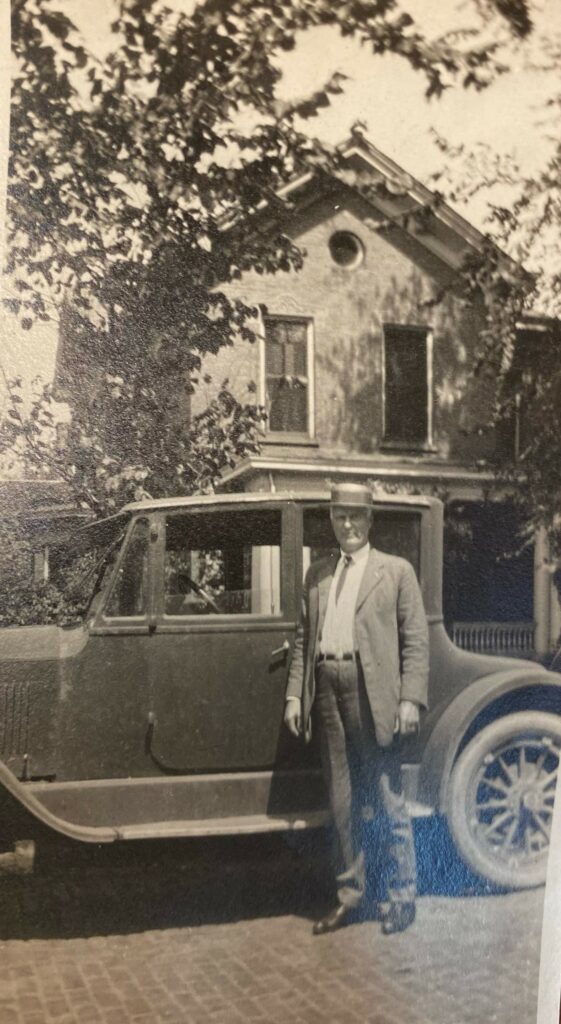
As I reorganized the collection, Manuscripts Archivist Greta Suiter provided me with three biographical files that she found in the Mahn Center’s reading room. These files contained photographs, newspaper articles, and other documents discussing the public lives of Henry, Charles, and Ralph O’Bleness. This was an excellent find, as these documents provided me with extensive knowledge of Charles O’Bleness, to whom most of this collection once belonged.
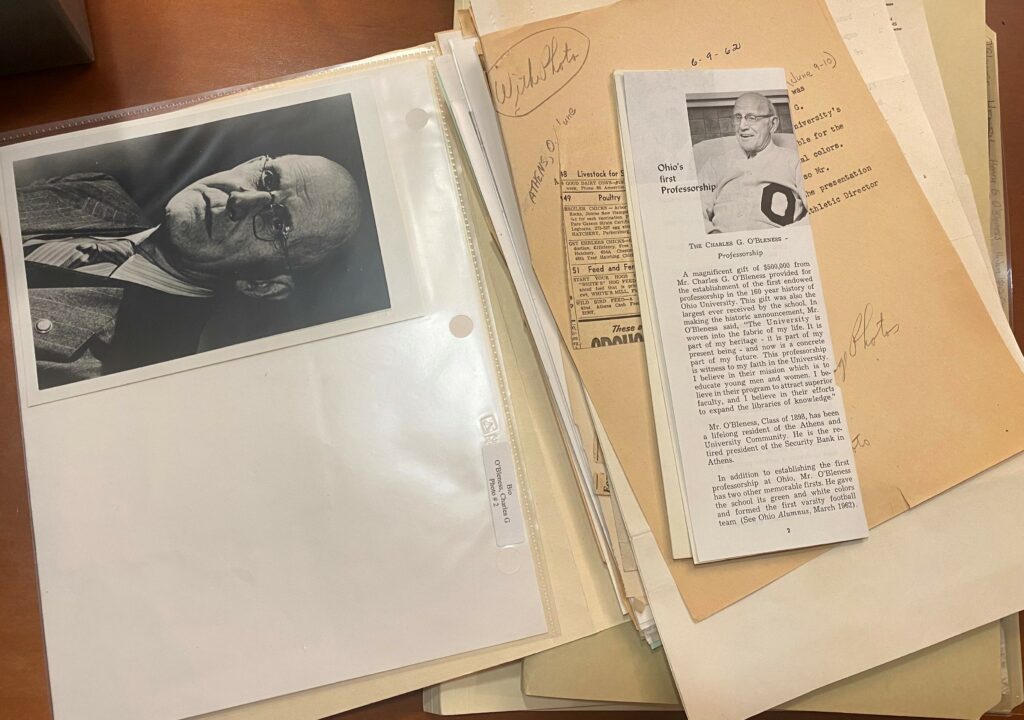
Although Charles passed away on May 31 st , 1969, his legacy lives on at Ohio University. Charles’ files revealed that he was responsible for founding OHIO’s first varsity football team. According to the articles in his file, Charles, and a group of other OHIO students formed a makeshift football team in the fall of 1894. Charles went to the undergraduate athletic association to request a coach and manager for the team. The association elected Charles as team manager and tasked him with finding a coach. Sam McMillen, the coach hired by Charles, could not come so he decided to send Frank Remsburg in his place. Until Remsburg arrived, Charles coached the team using directions sent to him by McMillen through the mail. This means that, for a period, Charles was a founder, manager, and coach of Ohio University’s first football team.
Charles also helped establish the school’s colors. When the team was founded, OHIO’s colors were blue and white. The sporting goods manufacturer from which Charles ordered the team’s first jerseys did not offer blue and white, so the team came together to decide on new colors. The team unanimously agreed on green and white, so Charles ordered green and white uniforms from the manufacturer, which is why those are still Ohio University’s colors today. I find it hilarious that our beloved school colors came to be because some sporting goods manufacturer did not carry blue and white uniforms in 1894. Ralph later enjoyed playing on this team alongside his brother until a spinal injury at football practice led to Ralph’s death.
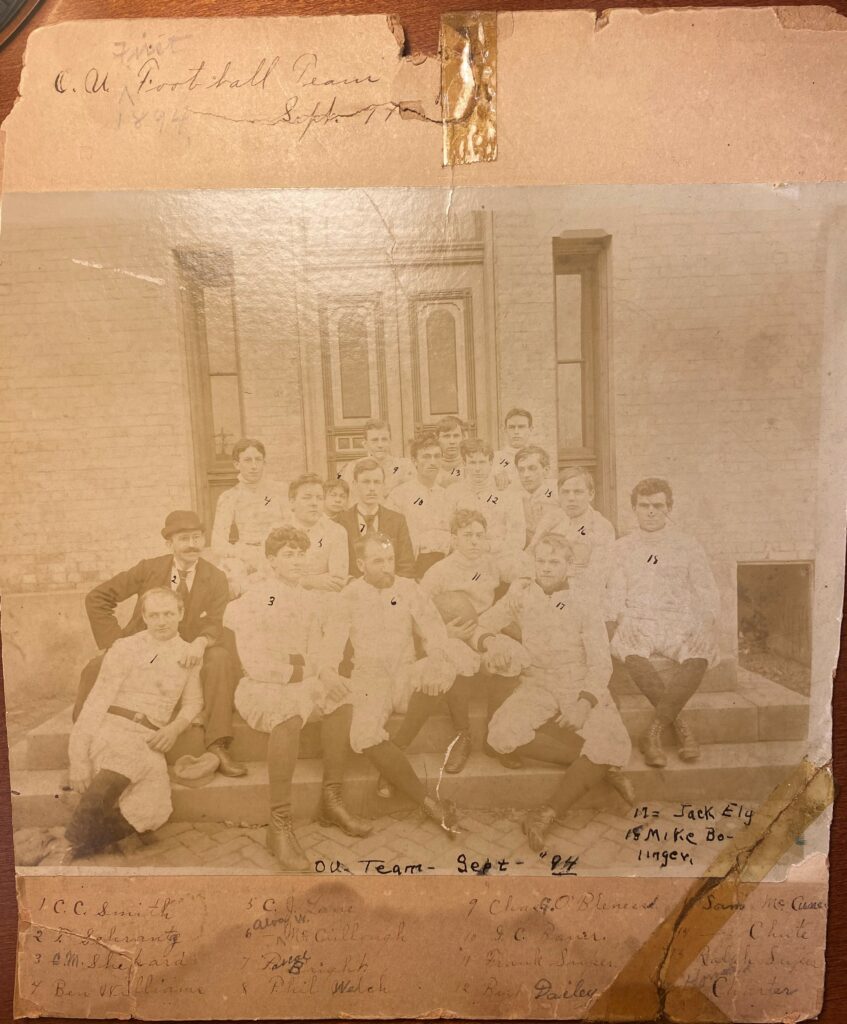
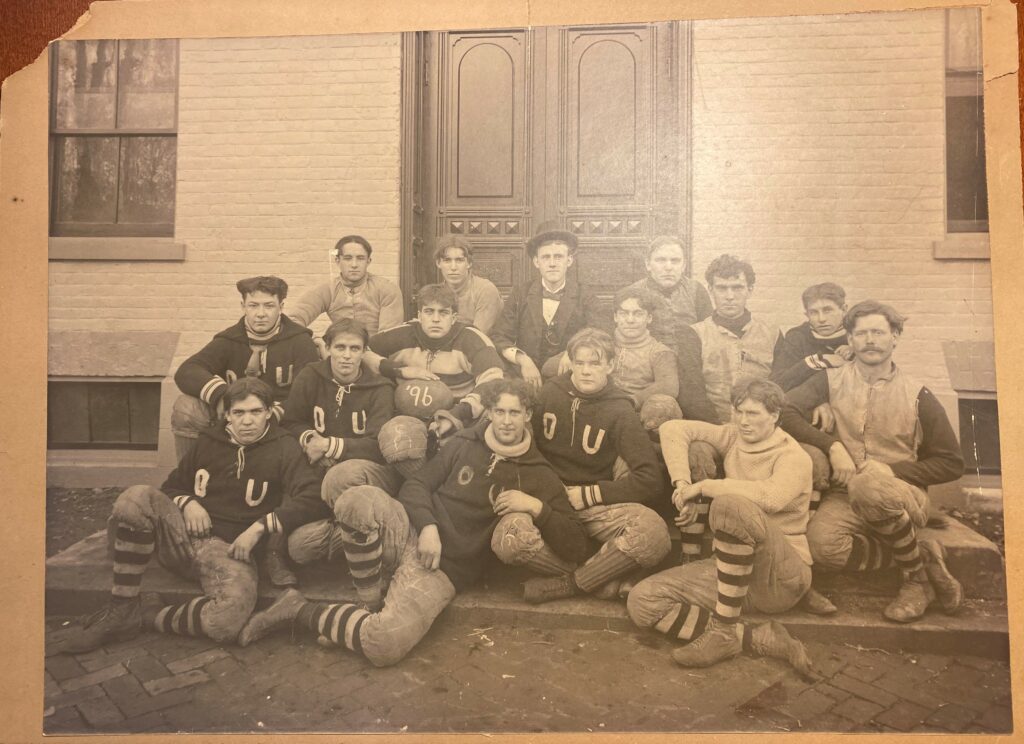
Another notable record I came across in these files was an eight-page essay titled “Memorandum on the Line of Descent of Henry O’Bleness, From the Original Founders of the Family in America in the Year 1663.” This memorandum begins with an introduction to the O’Bleness family’s original founder, Joost Houplines of the town of Houplines in the Nord department in Northern France.
This record provides a detailed description of the Houplines family’s travels until they reached America, but I will shorten the story for the purposes of this post. Joost changed his name to Joost Van Oblinus, which would eventually transform into today’s “O’Bleness” variation. He fled Houplines with his family in about 1649 and lived in the Palatinate of Mannheim in Germany until 1663, when the family travelled to America on the ship “De Boute Koe” or “The Spotted Cow.” Upon arrival, the family purchased land and helped found what is now Harlem, New York. The Memorandum provides a short description of each generation of the family until the ninth generation, which included Harry, Charles, Ralph, and Mame.
I have been in contact with Lance O’Bleness, a modern-day member of the O’Bleness family, throughout the semester, as he has contributed heavily to the genealogical data on the family. Lance even created a website at www.obleness.us where family members can register and help develop the family tree. His contributions to the O’Bleness family’s data on genealogical platforms have been an incredible help during my research. I hope that he will be able to visit the Mahn Center soon so that the knowledge provided by this collection may be included in this data.
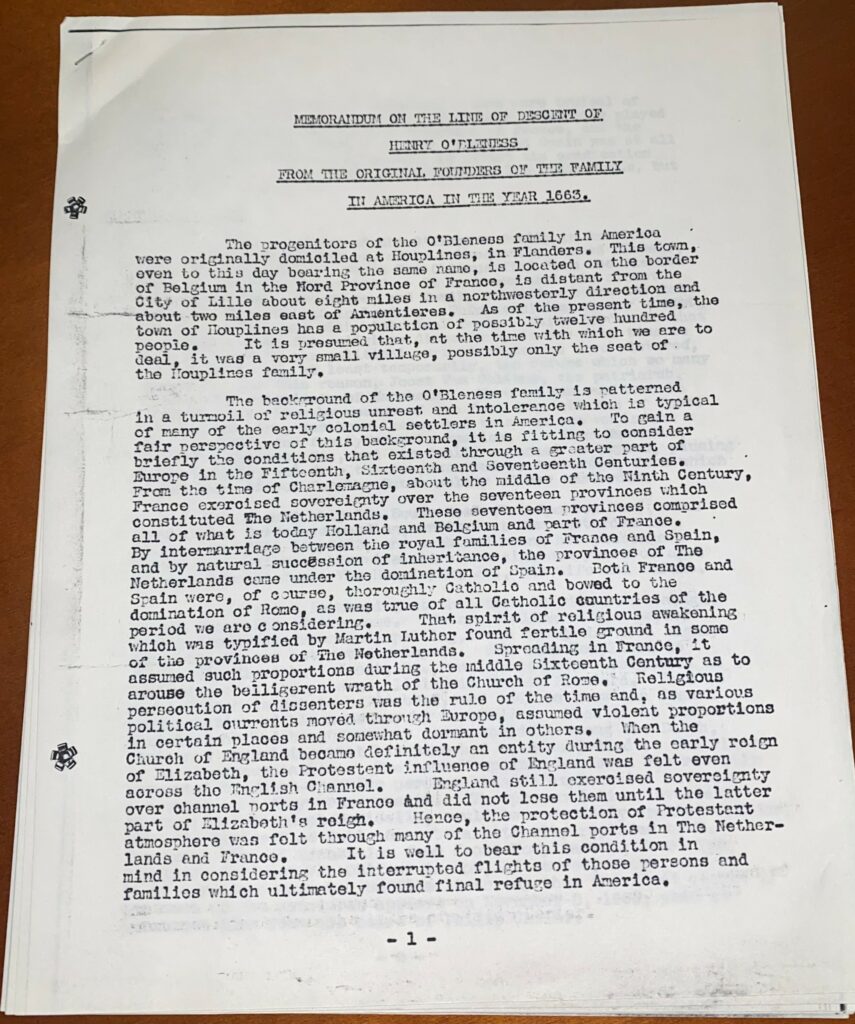
The next step in this process will be to digitize the collection. I will be working on digitizing the O’Bleness family collection throughout the spring semester, which will allow researchers to connect to these records from anywhere in the world through Ohio University’s digital archives.
In my final week as an intern at the Mahn Center, Greta Suiter and I visited the O’Bleness family’s plot at the West Union Street Cemetery. I have developed an emotional connection to the O’Bleness family while exploring their photographs, letters, and records and researching their lives over the last few months. The home they lived in at 16 E. Union Street in Athens no longer exists, and Schoonover Center now stands in his place, so we can’t stand in front of the old house and wonder about the lives of the people that called it home. This made visiting their graves a special experience for me. Although I will never uncover everything about the lives of the O’Bleness family members, it brings me peace to know that Henry, Josephine, Harry, Ada, Charles, Elizabeth, Ralph, Mame and Fred were all laid to rest together in the town they loved.
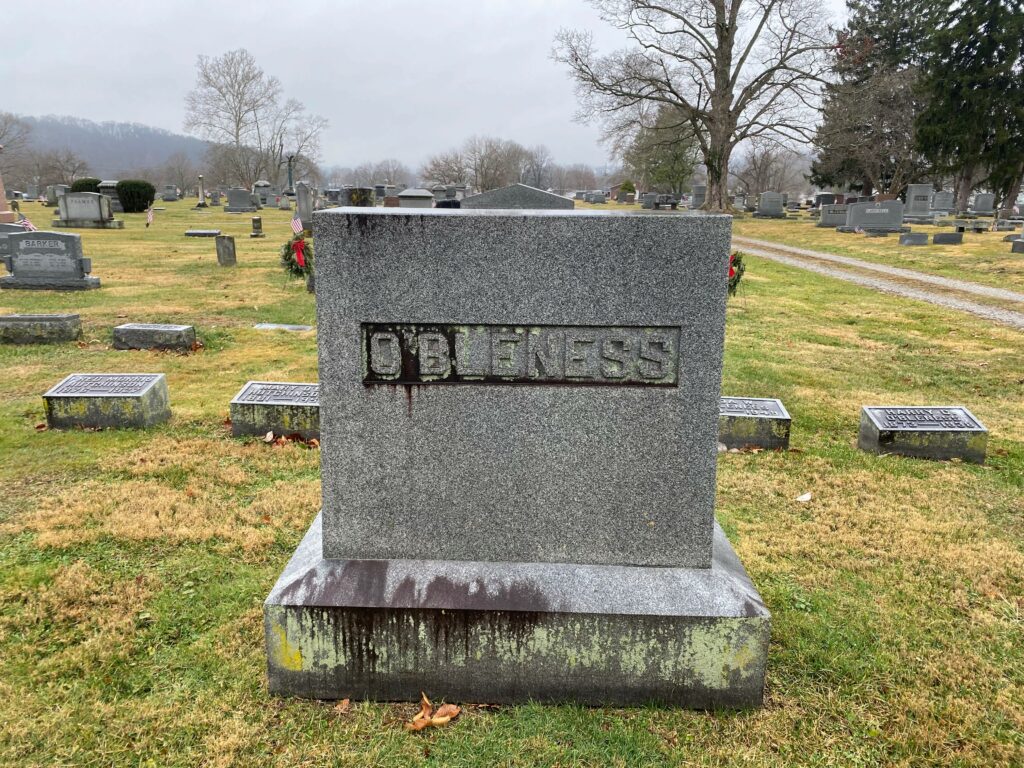
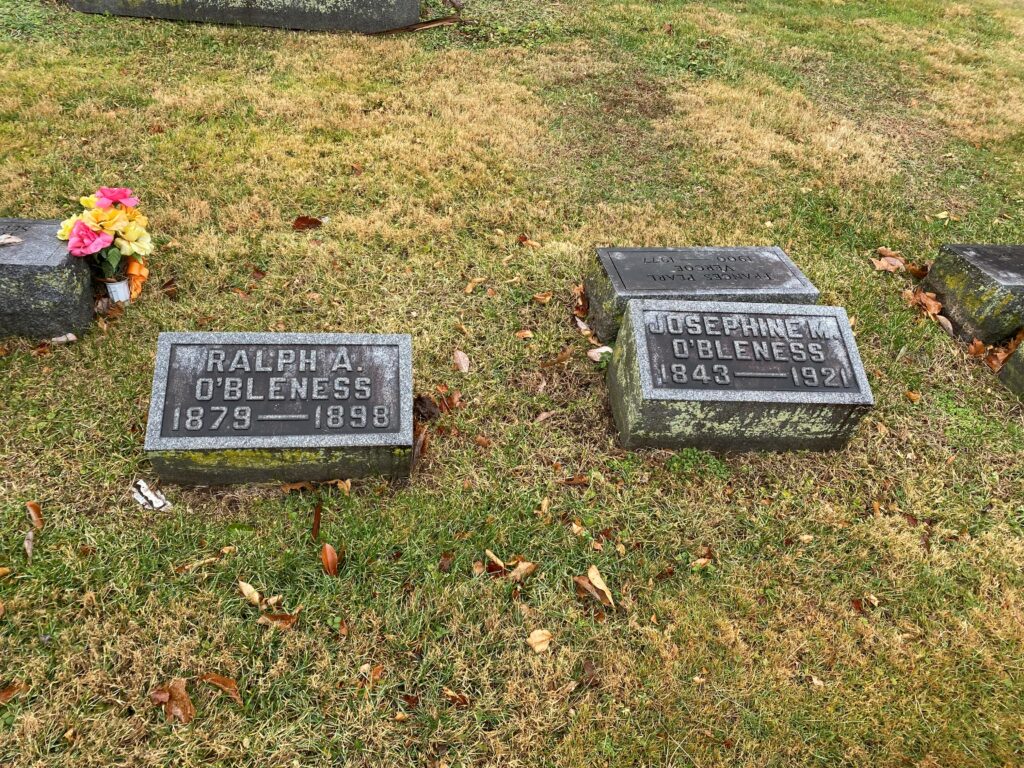
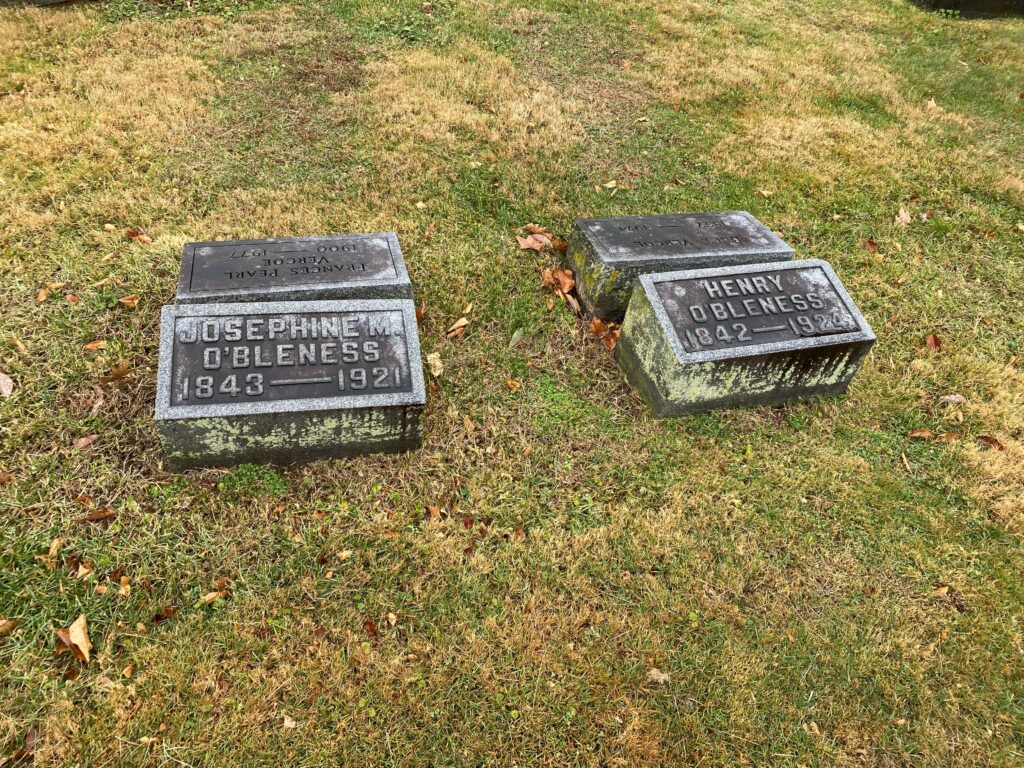
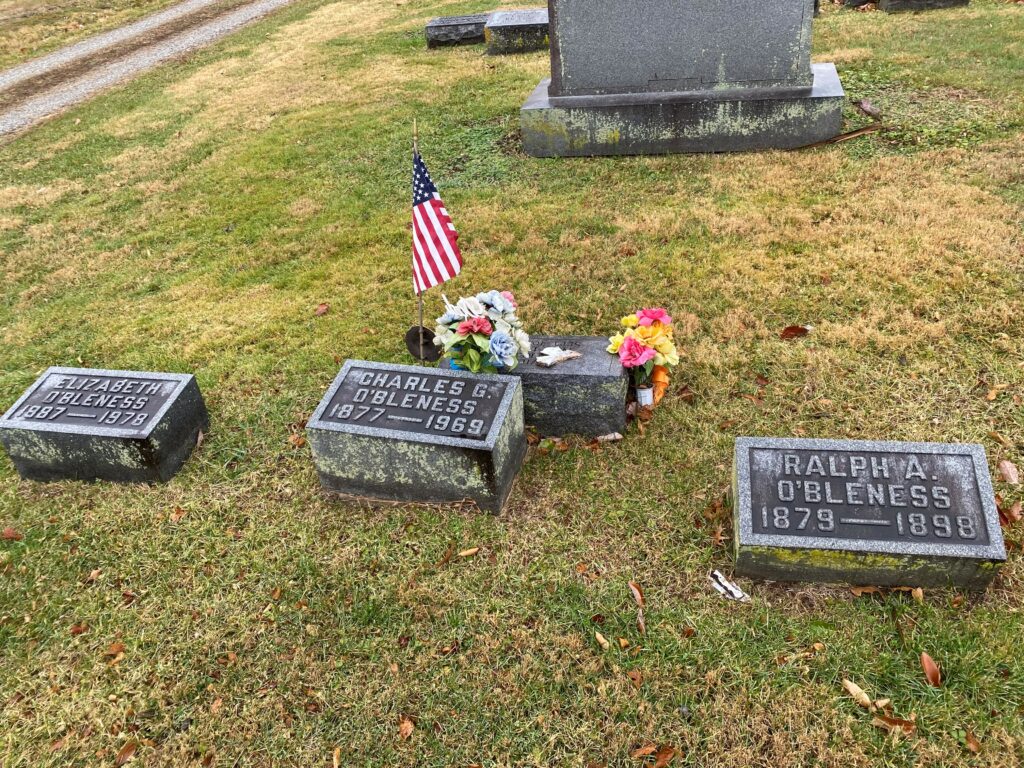
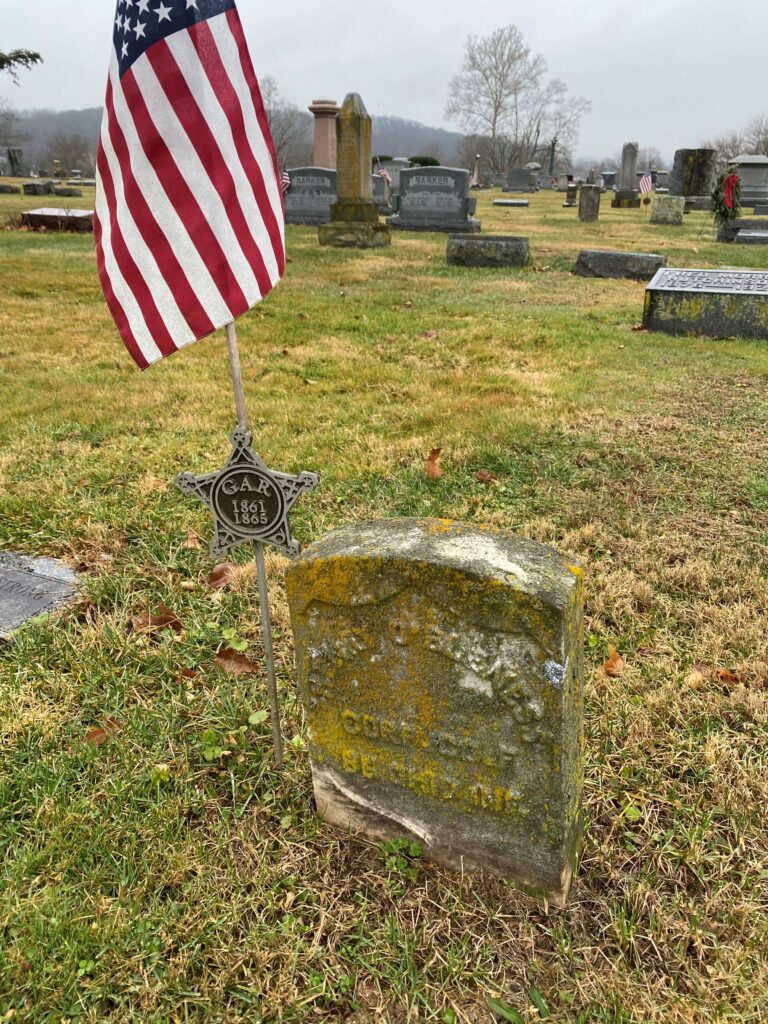
Sources:
- Gilbert, Jack. “OU’s First Team Credit to Founder.” Athens Messenger (Athens, OH), February 18, 1954, Sports Messenger.
